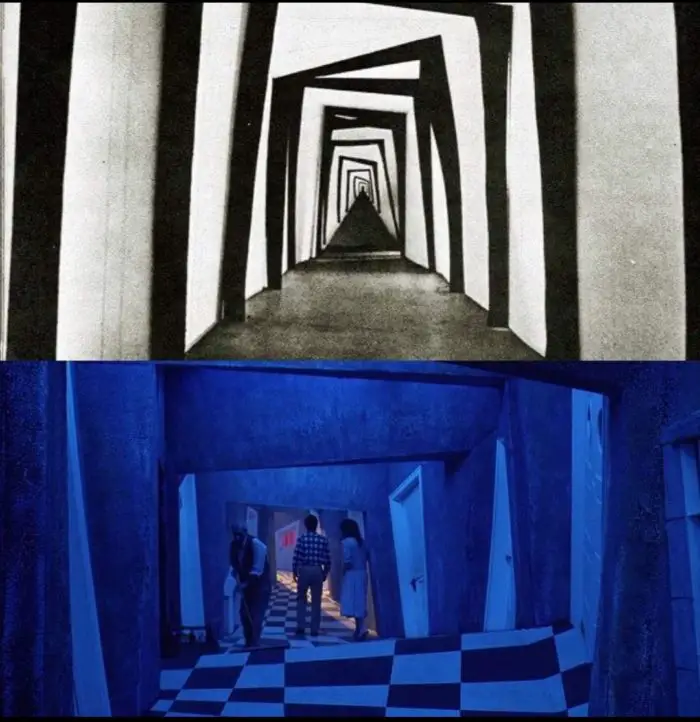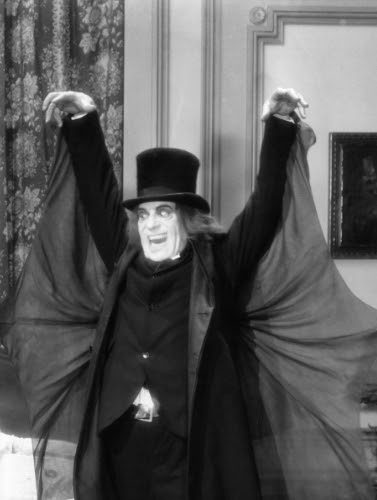Be warned because there are some spoilers here. I don’t feel bad about them though, because it’s not like I’m spilling the tea on the new release that’s been sold out. You’ve had about 100 years to see these films.
I’m a silent movie nerd. Something about that window to the past calls to me. In silent films we can see a world that is no more, or never even existed in the first place. Many horror fans may feel that the films of bygone days are not relevant or scary. We see the sometimes jerky black and white images flickering and we see the obvious overacting and may smirk. The rapid, jerking appearance is actually evidence that the film isn’t being shown at the proper speed. There are websites that feature stabilized and speed-corrected versions of early films, as well as having colorized them and added ambient sound. These films are remarkable and make the people of the past appear as real to us as we are.
The early days of cinema had a different audience who had different expectations. They had possibly seen a stage play but couldn’t imagine Star Wars in IMAX. We are accustomed to films with color and special effects and sound. In the early days of film, actors had to exaggerate their expressions and body language to convey their emotions and to share the story they were telling. They didn’t have their voices, just cards for their dialogue. The acting may appear hokey but they were making up for a lack of spoken words and were accustomed to conveying their message to a large audience in a theater.
You may not like silent films as I do, but you certainly have seen characters and elements from them in your modern favorite films.
Remember The Joker?

This isn’t a black and white photo from a Batman film. This photo comes from a 1928 film that had nothing to do with bats. We had seen this grin before. The inspiration for the Joker arrived in 1928’s The Man Who Laughs starring Conrad Veidt. That film depicted a man whose smile had been surgically mutilated by a king. He grows to adulthood and meets a love interest and is apprehensive about her seeing his face. She is blind, but he is reluctant to have her feel his face and ‘see’ the deformity. Look at this character and then look at our modern Joker characters. Similar look, right?
A similar theme of a main character being worried his love interest would find him ugly is repeated in Cyrano de Bergerac and the Hunchback of Notre Dame, and even Schrek.
But wait….another Conrad Veidt film has influenced modern film: The Cabinet of Dr. Caligari (1920). This film was about a hypnotist using a sleepwalker to commit murders. This is a prime example of a German Expressionist film. The unusual sets and angles brought it a surreal feel. The twist ending has been used many times since it debuted in 1920.
Just another boring silent movie…..Not!

We see themes and visuals from Cabinet in modern times. David Bowie used inspiration from the film to design a concert stage. Edward Scissorhands looks a bit like Cesare, the somnambulist (sleepwalker). In Queen of the Damned, the vampire Lestat is a rock star and one of his music videos is heavily influenced by Caligari, showing the unusual sets and artistic shots. In screenshots from the film and the video, I had difficulty distinguishing which was from the film and which was from the video recollecting the film.

Other modern references to Caligari are included in Beetlejuice. What do you think of this comparison?

The Strange Case of Babadook Chaney
Next we have an ancestor of the Babadook. He really didn’t have a name. He was called “The Man in the Beaver Hat.” When Lon Chaney donned his look for 1927’s London after Midnight, audiences were amazed. Chaney’s character wore a top hat, had strange teeth, and wild, bulging eyes. Chaney, the ‘Man of a Thousand Faces,” had created a memorable character in this film. The creature was all part of an act within the film and Chaney’s character was using his act to find a criminal. Unfortunately, this film is considered lost. MGM studios made an effort to conserve films while other studios did not.
Unfortunately, the 1960s fire in an MGM vault is said to have destroyed this film among many others. Many silent-era films are lost. All that remains of London after Midnight are stills, reviews from the films, and a script. AMC recreated London after Midnight using these stills and scripts. I watched that version and it makes me more frustrated that I can’t see the original film.

Most of us have not seen the actual film but perhaps have made the effort to watch the reproduction with the stills and script. The visuals in the stills are stunning. The Man in the Beaver Hat was something to behold. It’s unfair that we don’t have the full film available to us now. But we have The Babadook! Jennifer Kent was influenced by Cheney’s appearance when she made The Babadook. Also…look at The Man in the Beaver Hat….Look at the Penguin in Batman Returns…Look back at The Man in the Beaver Hat. See anything familiar?
A sound remake of London after Midnight was made in the 1930s starring Bela Lugosi. He didn’t wear the astonishing makeup and instead just looked like Bela Lugosi portraying Dracula.
Other silent films have influenced later movies. Nosferatu (1922) influenced a later remake and still another film about the making of Nosferatu (Shadow of the Vampire). If you take the time to watch some silent films, you’ll see that they aren’t boring like you might think. You do have to actually be attentive, however. When you watch a silent film, you actually have to watch it. You can’t have the movie on and be texting with friends and cooking dinner because you will miss something. Take some time and be attentive and present. You’ll be glad you did.
Looking for more horror film genre analysis? We’ve to you:
“Don’t Get Your Hopes Up: The Evolution Of The Fake Happy Ending In Horror”
“Hair as Body Horror in Exte: Hair Extensions”
“The Last Broadcast: Early Days of Found Footage”



